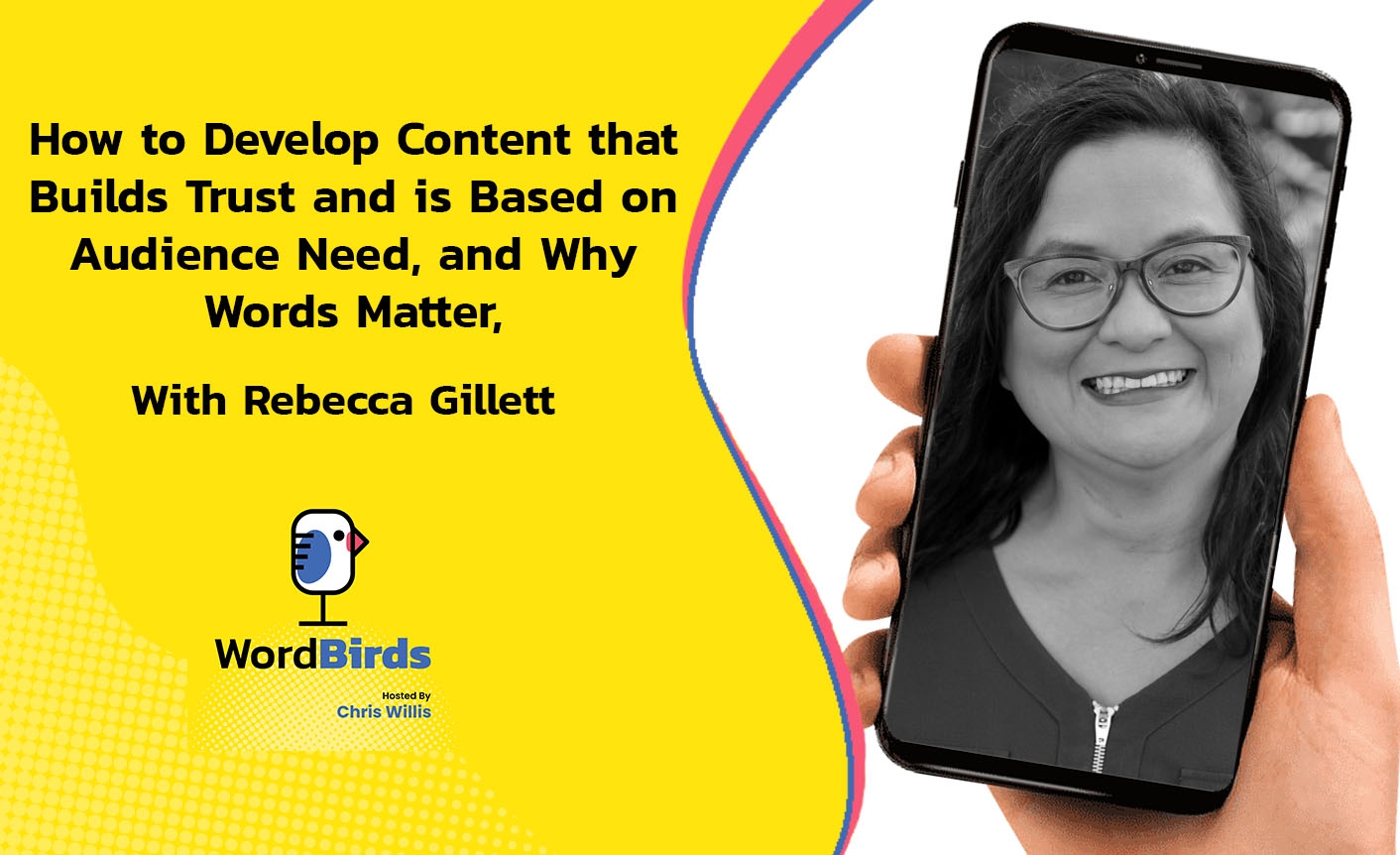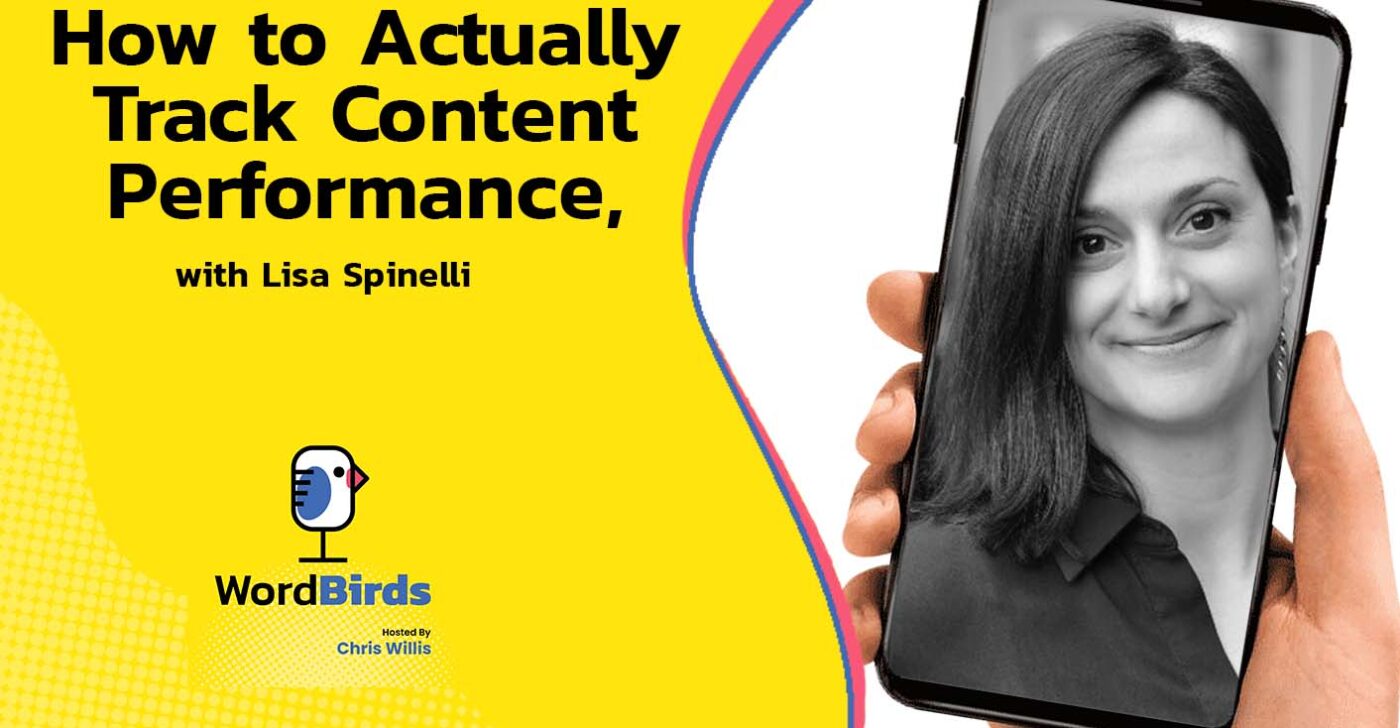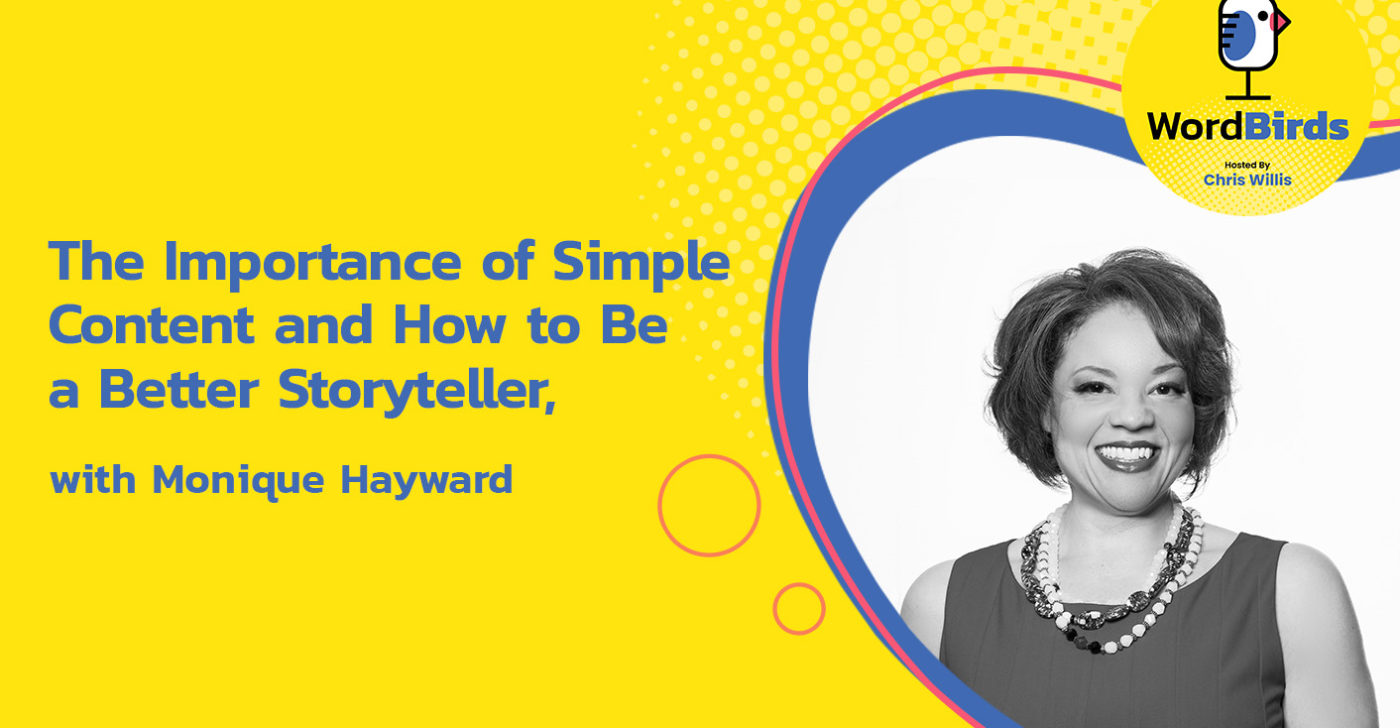Your content should be made with a “not for us, without us” mindset. It should align with what your audience is looking for and need. If you want to build that trust, you need content that gives value.
Join Chris Willis as he talks to licensed occupational therapist, Director of Content Strategy & Planning at the Arthritis Foundation, and host of the Live Yes! With Arthritis Podcast, Rebecca Gillett. Discover how Rebecca creates content for the arthritis community with them in mind. Find out how you can build trust by doing evidence-based research. And know why you have to be inclusive in all of your content.
Start creating content that your audience needs today!
Watch the Episode here
Listen to the podcast here
Read full episode transcript
Hello and welcome to Word Birds, birds of a feather conversation between people that care about words. This episode features Rebecca Gillette. Rebecca is the Director of Content Strategy and Planning at The Arthritis Foundation. We’re going to talk about her very individual journey from arthritis patient to occupational therapist to content strategist, and how she positions content not only to people like her but to much wider audiences, identifying the audience needs and developing the right content for that audience. Let’s sit back and get some insight from the flock. Hello, Rebecca, welcome to the show.
Thanks for having me. I’m excited to be here.
I am excited for you to be here. Your background, where you’ve been, the things that you’ve been through, and the job that you have now are specifically aligned. I don’t know how we can start this episode without taking a step back and understanding where you’ve been, how you’ve gotten to where you are, and where you are now.
It is a unique crazy story. You wouldn’t guess how I got here. I was diagnosed with rheumatoid arthritis when I was 26 years old. At the time, I was a director of marketing for a family-owned company and doing marketing. I just bought my first home at the age of 24. I’m living in my new home. I have a nice job in marketing, and I got diagnosed with rheumatoid arthritis. It shook my world and changed my path. I struggled for the first two years with trying to manage this chronic disease I was almost in denial that I had.
I didn’t know much about it. I was under the impression, like many people are, that arthritis was something that you got when you were old. I was wrong. I was with my doctor. He’s like, “You need to change jobs or careers because you are working at such a high level of stress and you’re not having the time to manage your own health. You need to wake up and start managing your health.” I was going to physical therapy at the time and telling my PT, “This is what my doctor is saying. I don’t know what I would want to do. Maybe I should be a physical therapist.” He’s like, “No, that would be too demanding on your hands.” My hands and wrists were very involved. He is like, “You should look into occupational therapy.” I was like, “That’s a good idea.” I was aware of what that health profession was.
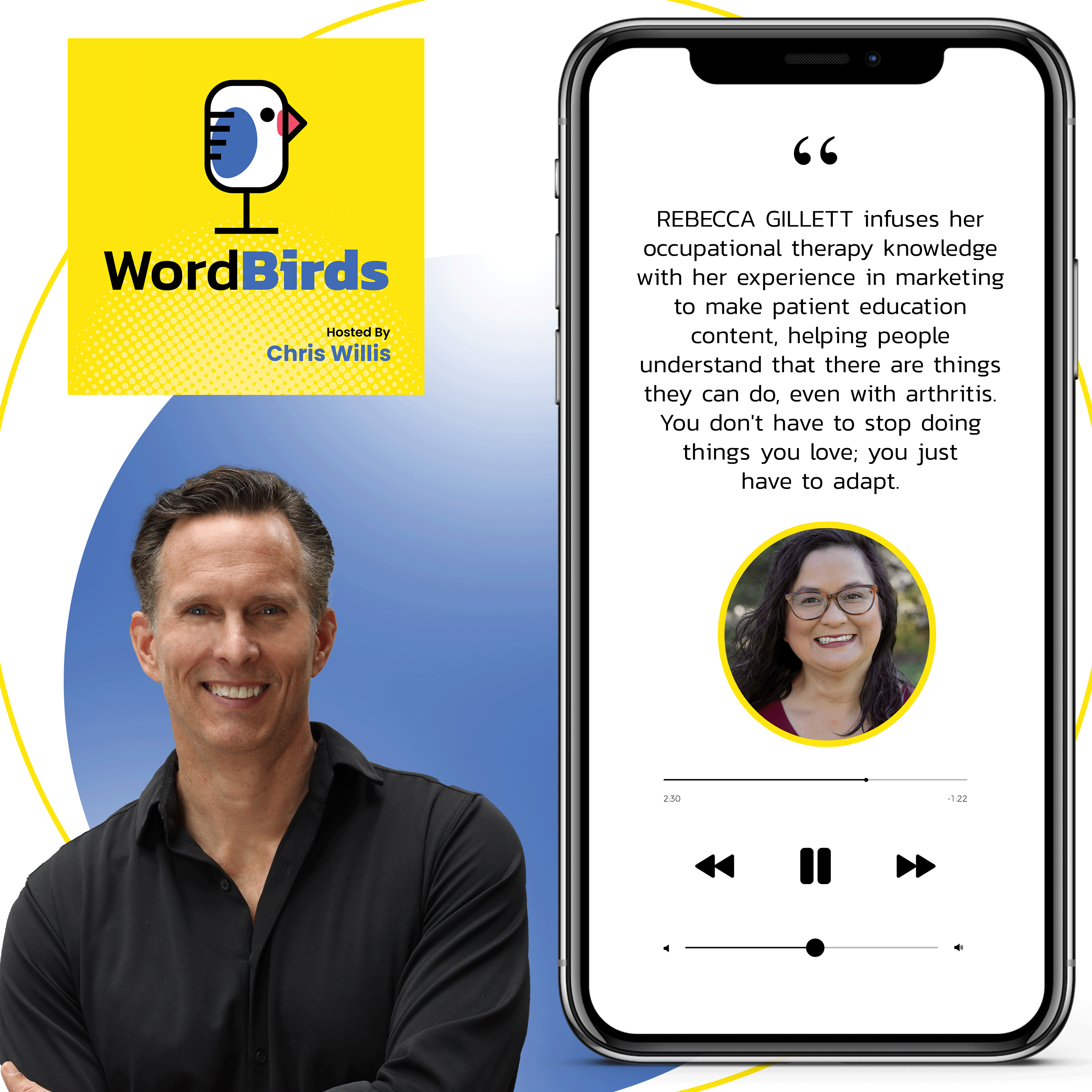
I started shadowing people. I shadowed a rehab director at a hospital. She was like, “Why are you holding your coffee mug that way? Didn’t anybody teach you that there are ways you need to protect your joints with rheumatoid arthritis?” I’m like, “I don’t know what you’re talking about.” At this point, I’m almost two years into my diagnosis. I had gone to a hand therapist who didn’t teach me all the things she spent teaching me about 15 to 20 minutes. I thought, “This could have changed where I am today if somebody had done their due diligence in their job to provide me some patient education.”
I didn’t have to shadow anybody anymore. Right there and then, I decided that I’m going back to graduate school and I’m going to switch careers. I going to be an occupational therapist. That’s what I did. I picked up and started taking classes. I went back to graduate school in Colorado for occupational therapy. During school, I learned so much about managing my own disease that every time I’d go to class and learn something new, I knew that I made the right decision.
When I was done and started working as an OT, I felt a little more settled in my life. I was in my early 30s and decided I should start volunteering or getting involved in a community and trying to meet other people with arthritis. I went to my first arthritis foundation, Walk to Cure Arthritis, event in Denver. Stepping foot onto that course, I realized I found my community of people. I volunteered right away. I walked up to a staff person and said, “I’m an OT. I have RA. How do I get involved?”
I started doing patient education in the community with our Arthritis Foundation at some events that they were holding. I got involved in the Walk itself and on the committee. I got involved in advocacy. I got involved on a national level and started providing my knowledge and expertise on patient education programs they were trying to develop nationally. Now I’m here. I was probably volunteering at least ten years before this job position opened as a health messaging strategist with them.
When I read the job description, the woman who became my boss and hired me, I already knew her from my volunteering nationally. She was excited that I wanted to come on board. I told her, “I wanted to call you because I saw your posting. It looks like you wrote this job just for me.” It included some journalism, communications, marketing, health profession knowledge, understanding the patient, and sharing that message out. We’ve reorganized with the pandemic. Now I am the director of content strategy and planning, infusing my occupational therapy knowledge into all of our patient education content, and content that we put out there for our arthritis community.
There are nearly 60 million people in the US with doctor-diagnosed arthritis. Instead of working one-on-one with patients as an occupational therapist, I’m doing what I set out to do, which was to help other people understand that there are things you can take control of when you have arthritis. There’s a lot that you can’t do, but there are a lot of lifestyle management things and things you can do to prevent more pain and protect your joints. It’s like my life came full circle. It’s great. I couldn’t be happier.
It’s a very individualized path that wouldn’t work for everybody but works perfectly for you. It speaks to the range of content that your organization is creating for your audience. You come from this wide background of the ability to understand how journalism, marketing content, and medical content play into this. What do you consider to be the scope of the content that you own?
I feel like what we do best at the Arthritis Foundation is provide that trusted expert advice. We are connected with so many amazing brilliant people who are in the arthritis world and rheumatology world and doing research. We fund research. The advocacy that we do has changed the lives of a lot of people with arthritis accessing treatments and medication. That was one of my favorite things to do as a volunteer.
I helped to get a law passed here in Colorado to limit the practices of step therapy, where insurance tries to tell you what you can and can’t take instead of it being your doctor. Your voice matters. My little story made such an impact that we have had laws passed in my state. Talking about content, words matter. I feel like this is what makes it unique for me in this position. I can wear the lens as the patient, as the healthcare provider, and as the expert. It’s a good fit. We have to think about the end user always when we’re creating content.
One of the things that you tend to say is that there’s a forgotten component of the content creation process. That’s the person that the content is created for. This is a place where you’re uniquely positioned because you own content strategy and content planning, but you also consume conceptually this content. Content strategy tends to be an internal business initiative. We sit and look at a whiteboard and define the way that we want to communicate. We define our audience and break out a persona.
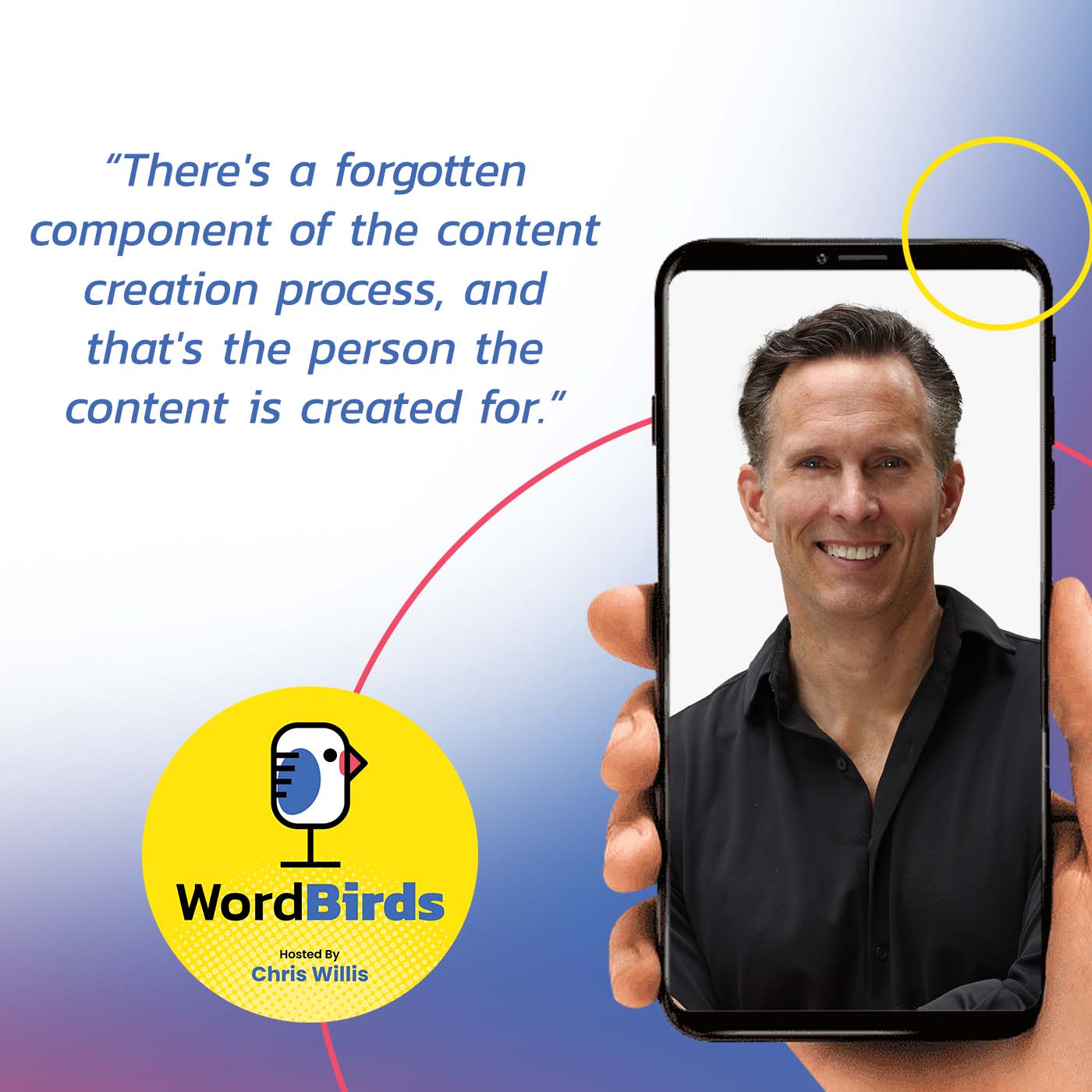
We make a bunch of assumptions about that persona and how they want to hear us and what they want to hear. Your statement about that forgotten component being the person who’s consuming, you’re taking content strategy and moving it more to audience alignment. It’s how we tie this to the audience and make sure that they’re getting the most out of that. How much of a role does that play in the way that you plan out your content?
A big reason and a thing that I like to remind our team all the time is I am our audience. Whichever audience you’re trying to talk to, I am our audience. I am a volunteer, patient, and healthcare provider. The way that I have approached our content is there’s a quote I love, “Not for us without us.” You’re hearing more and more trends of patients being involved in treatment guidelines, planning, and giving feedback on processes.
One thing we’re working on at the Arthritis Foundation is the ideal model of care. If we were trying to say, “What would a best-case scenario of your healthcare look like without including the patient?” That would make zero sense. Not for us without us in anything that we’re creating. Is this something that the audience wants? Is this something that the patient has been asking the question for? We are trying to move a lot more to this user-generated content because it can’t just be me. Everybody’s journey with any kind of chronic disease is unique. Everybody has a different story. What works for me might not work for the next person.
Everybody's journey with any kind of chronic disease is very unique. Everybody has a different story. What works for me might not work for the next person. Click To TweetOne thing with the podcast that I host we’re doing is we have a listener segment where we’ll post the question on social before we record, “What have you done that helps you to manage your arthritis?” I’m starting to use those comments and that feedback from people. “Do you have a question to ask our guest expert?” We’re using this platform called MemoryFox now, where you can set up a link and people can upload their story, text, video and audio, and take that content to share their story for them and share what tips and strategies they want to have for other people.
In 2023, I’m hoping to include that as part of the podcast where people connect. Instead of me repeating their question or their tip, we’re going to play their audio. Life hacks for arthritis are a huge topic for the patient community. Live Yes! With Arthritis Podcast. That’s the mantra of the foundation. It’s “Live yes” because when you have arthritis or a chronic disease, you’re often saying no to the things that you’ve loved to do or need to do. We want to promote that there are things you can do. You don’t have to stop doing things, but you can change maybe how you do things or adapt. That’s what OT is all about.
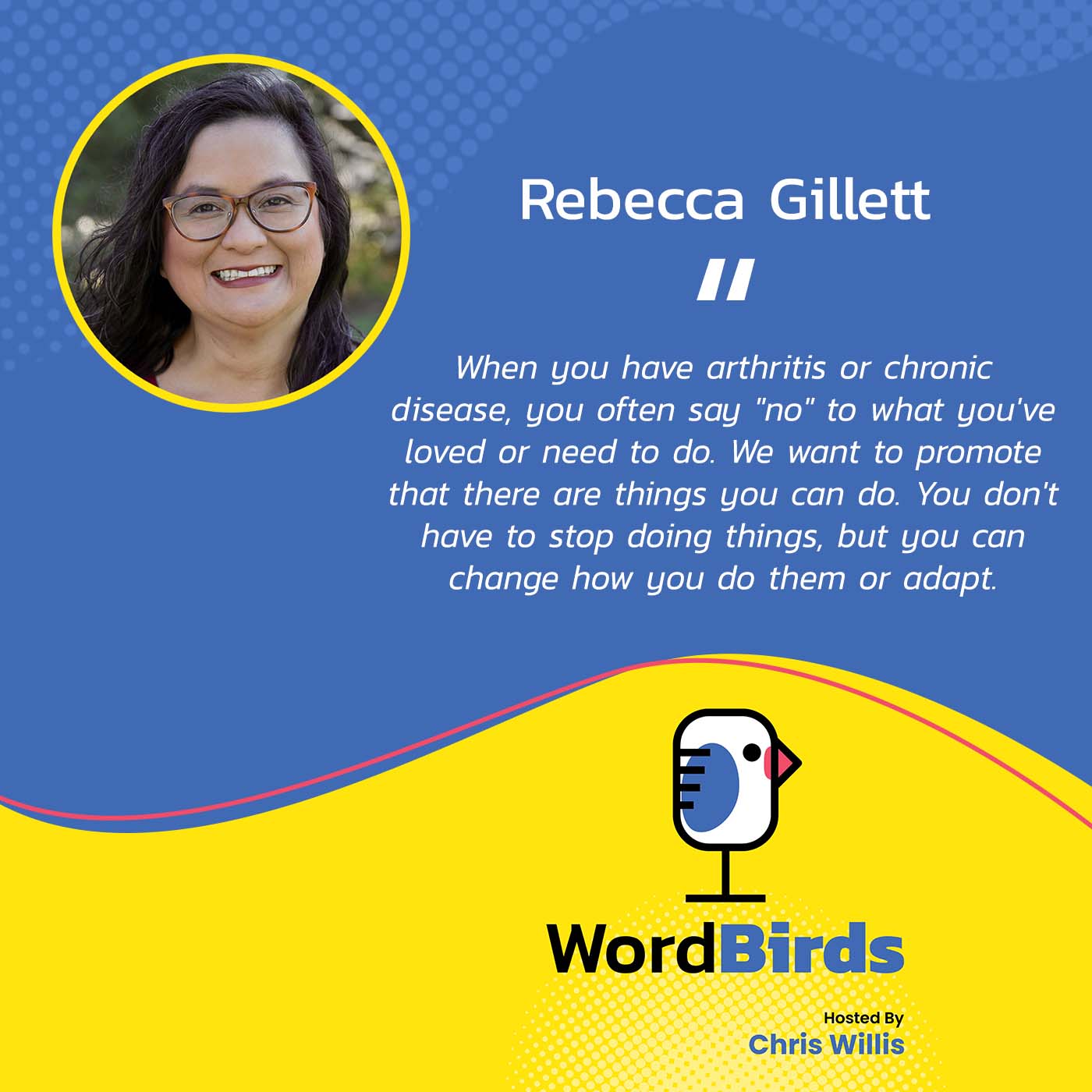
Getting people to understand and learn from each other is a huge part of the community. One content plan I have for next year is we’re doing this thing where we’re asking, “Share with us. Show us a video of what’s difficult for you.” We have an expert who is another OT who will show them, “Here are some ideas to adapt that task that’s hard for you.” That’s user-generated content. That is with our audience, not just for the audience. It’s with our audience. We’re telling them, “What is hard for you every day? What’s the one thing you think other people will benefit from?”
Even in the language and the messaging that we’re sharing out, I’m pushing everyone on the team to make sure, “Is this patient-friendly? Is this how you would talk to your friend who has gotten this diagnosis or is struggling with their mental health? What language would you use with them?” Not so much, “Here’s what we can do for you as an organization.” It’s more, “What can we do for you as an organization?”
How much are you struggling with the vast volume of answers in the marketplace right now for whatever seems to be wrong with people? I don’t want to batch it as misinformation, but there’s a lot of content on the internet. When something’s wrong with me, I search for it. My elbow hurts right now. It’s important to note that I workout a lot. I probably heard it at the gym, but the internet says that I have a nursemaid’s arm. It’s a 1700s thing where the nanny used to yank the arm of the child and it would shake the elbow loose. I’m pretty sure I don’t have a nursemaid’s elbow. In your space, you’re dealing with trust issues and all kinds of challenging information versus what’s provably true. How do you manage that?
We have connections with the experts. The experts are doing research. A lot of what we talk about and a lot of what we share are based on evidence-based research. The favorite thing for people to talk about is a diet for arthritis. What should I eat? What shouldn’t I eat? There’s a lot of research, but there isn’t a solid saying, “This specific diet.” The one thing that is overarching is the anti-inflammatory diet and Mediterranean diet or those types of diets where you’re eating anti-inflammatory type foods, foods that are not processed, plant-based foods, and things like that.
Is there a research that says you should be on a strict vegetarian plant-based diet? No, not yet. Is it being conducted? Yes. We’re not going to come right out and say, “You need to be vegetarian,” because the research isn’t telling us that. It is telling us to eat anti-inflammatory foods like a Mediterranean diet. We do know now, based on some research, that the gut and the microbiome could play a role in autoimmune diseases. Right now, there is research specific to rheumatoid arthritis. Is it specific to osteoarthritis? No.
There’s a lot of research happening. Most of what we’re basing information and suggestions on is based on research. Part of what we do as an organization too is to fund that research. For instance, the strongest indication for managing your arthritis based on research is physical activity and staying active. A lot of what we share out are the things that we know based on hundreds of research papers that are helpful for you.
Do you find that you have to SEO this content so that you’re out-positioning content that’s not valuable or true?
Yeah. SEO is king. You need to make sure you’re putting the right keywords out there too. There’s a lot of competition in that health space. When we provide information to our audience like who is trusted, you look for the dot-gov, the dot-edu, and the dot-orgs versus the dot-coms. Look at the sources and who’s providing this information, and what it is based on. Also, if you dive even more into the studies, were there 10 people in that study or 10,000? There’s always an article that comes out. We look at what that new study says and who did it, and how many people were involved in the research before we ever share that out. Was it done on people or mice? That’s a huge thing. It has to be done on people.
When creating content, always look at who's providing the information and what it is based on. Click To TweetIt’s helpful. In your approach to building trust in varying communities as you deliver the information you deliver, what role does inclusive language, as an example, play in the creation of your content?
It is becoming more and more important nowadays. The pandemic highlighted how there are a lot of disparities in our healthcare system. I say we based everything on the research, but the history of our research is not inclusive. We’re not including all races. The majority of research done in the health medical world is not inclusive of all races and genders even. We’re at a point where we’re trying to provide more content to all communities and almost catch up.
Arthritis affects a lot of people of color. We want to make sure that we’re addressing the needs that they have. We do have this patient-reported outcome survey that we’ve been doing the last few years that we’re specifically sending out to different communities. We know what affects the Caucasian community is not the same as the Black community or the Hispanic community and the Asian community. We want to know what the different struggles are in each, and then we can tailor our expert content based on what they tell us.
For instance, religious and spiritual beliefs might be part of how somebody manages their chronic illness. A strong connection to prayer or their spiritual side to help them cope with their emotional well-being and mental health is something we have to think about too. We’re trying to make sure that we’re getting educated on how to provide information and content to a multicultural community.
Back to your background, I feel like you’re very well suited to do that because you come from a journalism background. You understand the question process of this, and listening more than you speak to gather the information.
It’s been helpful. A lot of times when people start out in a journalism career and they’re in it, they’re like, “What do I do next? How does this apply?” It applies to everything. Deadlines are easier to meet when you’ve worked on a new show and you’re changing copy as the anchor is speaking. I feel like asking questions that are more objective and being able to hear the full answer that somebody’s giving and asking tougher questions is part of the content.
If you’re not looking at all sides, science and facts matter, you’ve got to be able to present all sides. Also, you can’t be blind to the fact that sometimes we all have biases. Implicit or complicit or not, you’ve got to know that there might be bias in something that you’re putting out there and be sensitive to that. Otherwise, how do you reach those communities and the people that are underserved if you’re not checking yourself?
Know that there might be bias in something that you're putting out. Be sensitive to that. Click To TweetWe’re trying to make sure we’re being inclusive. One way we’re doing that too right now is we’ve launched a whole series of new support groups. We call them the connect groups. They are specific to different communities. There’s an LGBTQ-plus community, a Hispanic connect group community, and a family planning community. People who have like-interests are able to share what’s working or what’s not working with them and know that they’re not alone and that they have other people going through what they are. They can share knowledge and tips with each other.
It seems like that would probably feedback on the content that you’re creating and make more valuable content specific to those groups.
Having those groups be able to meet each other and listen in on their conversation is going to help us do a better job of letting them feel heard and feeling like they’re seen.
You think it’s the Arthritis Foundation, it’s one thing, but it’s not. It’s a great example of something that could seem simplistic to somebody from the outside, but there’s a lot of complexity in the way that you’re delivering information across multiple personas and nationalities. There’s a lot to juggle there.
It is always hard as the content director and we’re trying to do strategy while, “Which audience are we talking to here?” We talk to a scientific community too. Osteoarthritis is the type of arthritis that most people know about. Everybody’s prone to it at some point in their life. There are 32.5 million people out of that nearly 60 who have osteoarthritis. There isn’t a good medication for that. There aren’t a lot of answers right now like there are for the autoimmune types of arthritis where there’s a whole slew of biological drugs that have changed the face of arthritis for those people like me.
With osteoarthritis, there’s a ton of great research going on out there. We’ve got a consortium of researchers and clinicians working together to share their ideas of what they’re working on in order to get to a point where we have better treatments and maybe a cure one day. Right now, it’s a treatment. What is a great treatment that can stop or slow the progression of osteoarthritis for people? That’s something that we work to fund. You’re talking to those researchers and scientists too. That’s a very different language that I’m not as versed in.
As an occupational therapist, I can read their research, but to talk their speak is not something I do. We have a team of people who do this on our science team. It’s having the right people and leaning on them for their expertise so that you can process that, translate it, and when we’re sharing it to a patient, talk about it differently than when we’re sharing it to our healthcare providers who partner with us.
I feel like people are going to leave this particular episode and have additional questions, and maybe want to continue this conversation. What’s the best way to get in touch with you after this?
You can find me on LinkedIn. I have my profile listed on there as Rebecca Gillett. You’ll be able to find me there. Send me a message and ask me any questions. It’s great to connect with other people who are working in the same field as you to see how they do things. I love getting ideas from other people. Find me on LinkedIn
If you love the ideas that you’ve learned about arthritis, there is a podcast.
I host our podcast. You can find it anywhere you get your podcast. It’s Live Yes! With Arthritis.
Rebecca, thank you very much for being on the show. Have a great rest of your day.
Thank you. I enjoyed it.
Important Links
- Rebecca Gillett
- Live Yes! With Arthritis Podcast
- Rebecca Gillett – LinkedIn
- WordBirds – LinkedIn
- WordBirds – Home page
About Rebecca Gillett
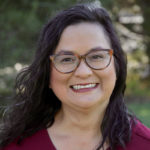
Rebecca Gillett is a licensed occupational therapist with experience working with all ages in a variety of settings. She combines her educational background and professional experience with her personal experiences of living with rheumatoid arthritis and osteoarthritis to educate and raise awareness for others with arthritis. She currently serves as the Director of Content Strategy & Planning at the Arthritis Foundation, infusing her knowledge and skills as both a patient and health care provider into the patient education and content developed for the arthritis community.
Prior to her OT career, she worked in broadcast journalism and marketing. She obtained her Bachelor of Science in telecommunication from the University of Florida and her Master of Science in occupational therapy from Colorado State University. She served as a volunteer for 10 years with the Arthritis Foundation before joining the national staff. She lives in Colorado with her husband and son.
